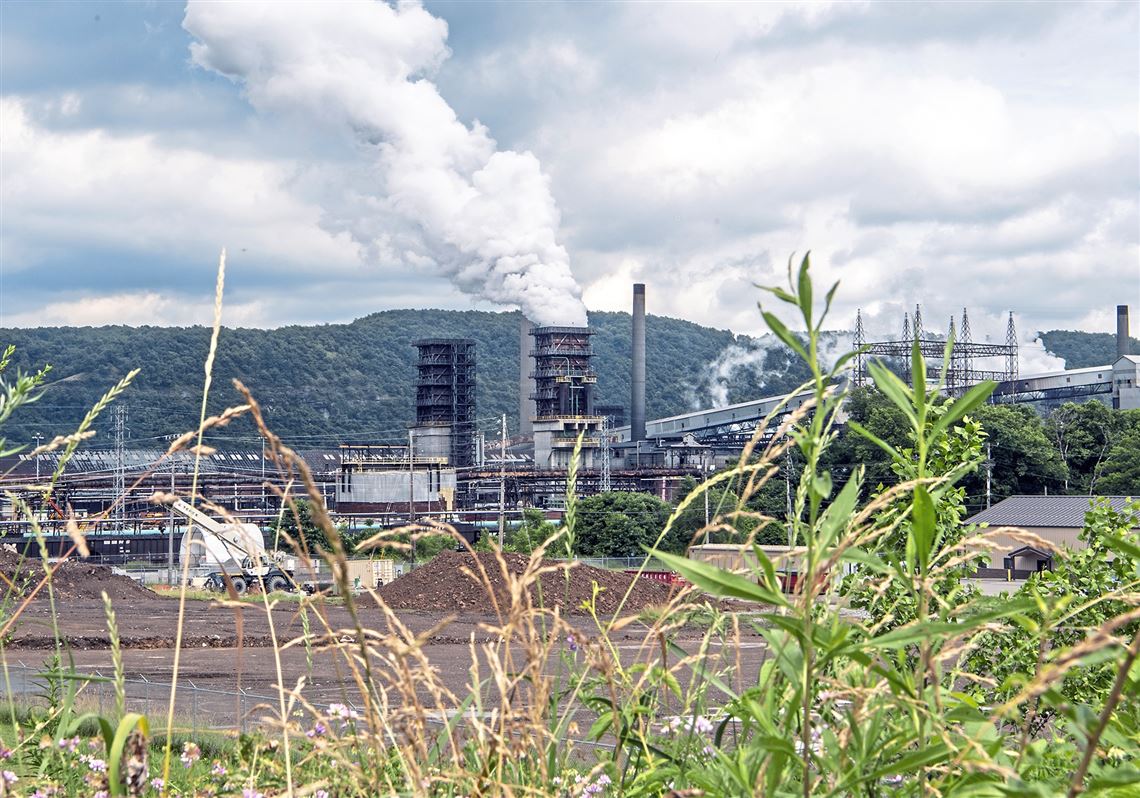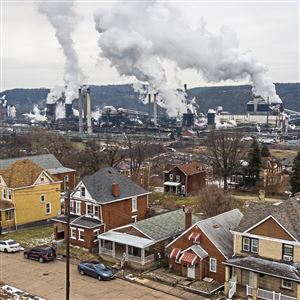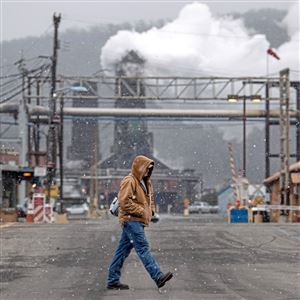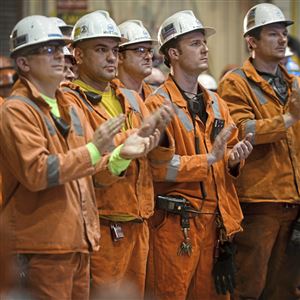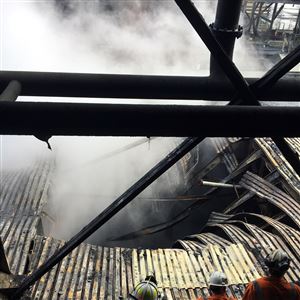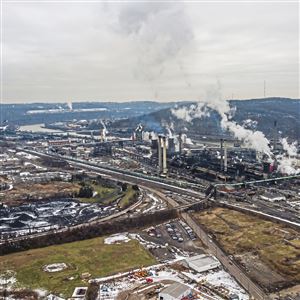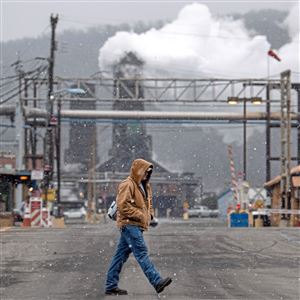U.S. Steel’s Clairton Coke Works resumed full operations late Monday following a small electrical fire earlier in the day that knocked out the plant’s coke gas desulfurization equipment.
The company’s announcement came after the Allegheny County Health Department told it to meet air quality standards within 20 days or shut down the plant.
That emergency order had set a 24-hour deadline for the Pittsburgh-based steelmaker to submit a plan to “achieve compliance” with sulfur dioxide and hydrogen sulfide emissions limits.
Had the company failed to comply within the times specified, it would have had to stop making coke until demonstrating that its pollution controls were fully operational.
U.S. Steel beat those deadlines with time to spare, the company indicated in a statement Monday evening.
“At approximately 8:15 pm on Monday, June 17, repairs were completed at our Clairton Plant following a small electrical fire that occurred early Monday morning. At this time, normal operations have resumed, and we have successfully restored the desulfurization process,” the statement said.
“Restarting the desulfurization facility and minimizing the potential for impacts to the environment and community were of the highest priority for the company.
“During this brief suspension of our desulfurization capabilities, mitigation efforts were deployed, and no exceedances of sulfur dioxide were recorded at nearby air quality monitors as of data available through 5 p.m.”
The health department also had threatened fines of $25,000 per pollution violation per day.
County health officials said late Monday that inspectors will be at the plant site to “verify all systems are back online” and to speak with plant management.
The fire was the second since late December affecting the coke gas desulfurization equipment.
After a fire early Dec. 24, the plant exceeded sulfur dioxide, hydrogen sulfide and soot emissions limits on 28 days over the next 3½ months while repairs were made.
The health department issued an advisory Monday morning, telling “sensitive populations,” including those with respiratory conditions, children and the elderly, that the potential existed for elevated levels of sulfur dioxide emissions but there was “no need for residents to take specific precautions at this time.”
In a statement before U.S. Steel announced that the equipment had been repaired, the company said it was reviewing the emergency order, which it could have appealed.
“Crews continue to work to restore desulfurization at the Clairton plant and have made good progress,” the company said earlier in the day. “As the [health] department noted this afternoon, as of noon today there had been no elevated SO2 [sulfur dioxide] levels at any of the monitors in the Mon Valley. This matter is a top priority for the company and we will share additional information as it becomes available.”
Allegheny County Executive Rich Fitzgerald said in a statement that he was “disappointed” that a fire once again had caused pollution concerns.
“People in this community need assurance that the pollution control equipment is reliable and usable. Organizations with critical systems like hospitals have to ensure that there are redundancies and back-ups. U.S. Steel shouldn’t be any different,” Mr. Fitzgerald said. “The health of the people of Clairton and surrounding communities, and the U.S. Steel employees, is too important to do otherwise.
Monday’s fire, reported to the health department by the company shortly before 5 a.m., was much smaller than the Christmas Eve blaze, was extinguished quickly and did much less damage, according to the company.
U.S. Steel said the fire occurred in an electrical breaker panel and interrupted power to the plant’s “by-products facility,” where coke oven gases are processed.
The company said steps were taken to “mitigate environmental impacts,” including flaring gases and replacing the use of coke oven gas with lower sulfur natural gas.
“We don’t have a full damage picture yet, but last time the desulfurization equipment was damaged, and this time it’s waiting to be restored,” company spokeswoman Meghan Cox said earlier Monday. “In December we were talking about significant failure, significant damage, and today we’re talking about a circuit breaker that affected power to the control rooms.”
The investigation of what caused the fire was ongoing, she said.
The coke works, 20 miles south of Pittsburgh along the Monongahela River, has a long history of pollution problems for which it has paid more than $4 million in fines, and environmental organizations seized on Monday’s fire as yet another example.
Myron Arnowitt, Pennsylvania director for Clean Water Action, said he was concerned about the plant operating without desulfurization equipment.
“It’s being set up to operate without the controls and if it’s for a short period, that’s one thing,” he said. “But if this turns into days and weeks and months, that’s another thing altogether. Last time the coke works emitted nine years’ worth of pollution in the three months it took to do the repairs.”
Matt Mehalik, executive director of the Breathe Project, a coalition of 24 environmental organizations that filed a federal notice of intent to sue U.S. Steel for unhealthy emissions following the Dec. 24 fire, said the emergency order is appropriate against a repeat offender.
“Today’s coke oven gas release is not the first one to have occurred since U.S. Steel reportedly repaired the plant on April 4,” Mr. Mehalik said. “According to the National Response Center, U.S. Steel released 525,000 cubic feet of coke oven gas on May 17, 2019. Today’s incident is the second time in less than 10 weeks in which a major release has occurred.”
Zachary Barber, a spokesman for PennEnvironment, a statewide environmental organization, said the health department’s Liberty monitor, downwind from the coke works, recorded a “spike” in hydrogen sulfide levels at the time U.S. Steel reported the fire.
“It’s great to see the health department putting public health over polluter profits and saying that not even U.S. Steel is above the law,” Mr. Barber said. PennEnvironment, along with the Clean Air Council and the health department, filed a lawsuit in late April charging U.S. Steel with violating the federal Clean Air Act by failing to adequately control emissions of sulfur dioxide and other coke oven gases.
“Yet another fire at this aging facility further underscores the dangers of allowing U.S. Steel to continue to operate what amounts to a doomsday machine that cannot be turned off when pollution controls are knocked offline,” said Ashleigh Deemer, PennEnvironment’s Western Pennsylvania director.
“Putting an end to these recurring problems is exactly why we sued U.S. Steel and why the Allegheny County Health Department decided to join our lawsuit,” she said. “The residents of the Mon Valley deserve clean air, not more illegal pollution from U.S. Steel.”
Following the December fire, U.S. Steel flared its high sulfur coke oven gases and continued to operate its coke making facility and its Edgar Thomson and Irvin steel mills using cleaner burning natural gas in place of coke oven gas. The three plants employ about 3,000.
Coke oven gas is comprised of hydrogen sulfide, sulfur dioxide and volatile organic compounds. Sulfur dioxide is one of six primary or “criteria” pollutants regulated by the Clean Air Act, and at high concentrations can affect breathing and aggravate respiratory and cardiovascular diseases, including asthma, bronchitis and emphysema.
Coke is used to produce iron and steel. Clairton’s 10 coke batteries contain 708 coke ovens and more than 6,300 potential coke gas emission points. Each year, the facility produces about 4.3 million tons of coke.
Don Hopey: dhopey@post-gazette.com or 412-263-1983. Twitter: @donhopey.
First Published: June 17, 2019, 3:13 p.m.
Updated: June 18, 2019, 2:34 a.m.






